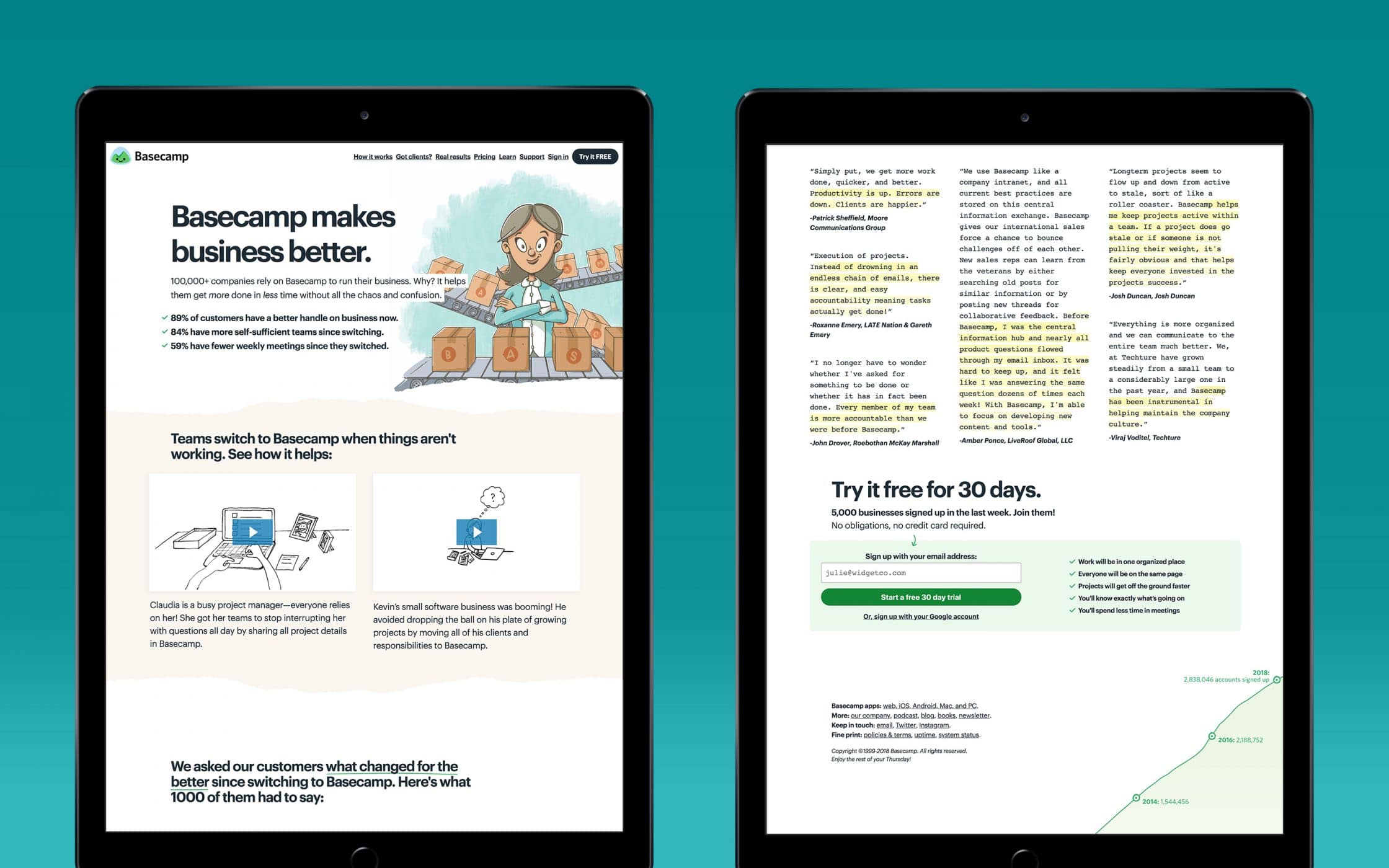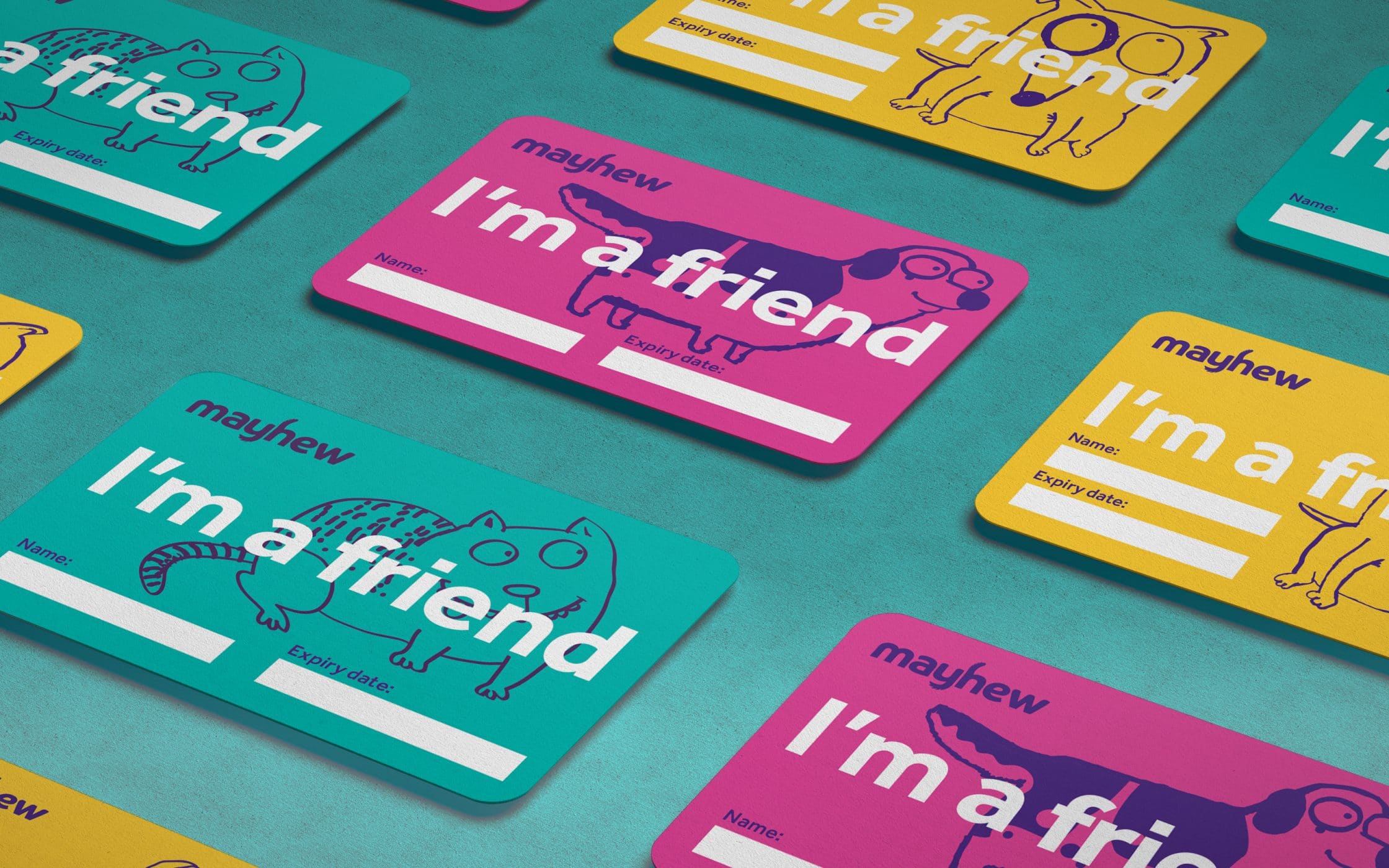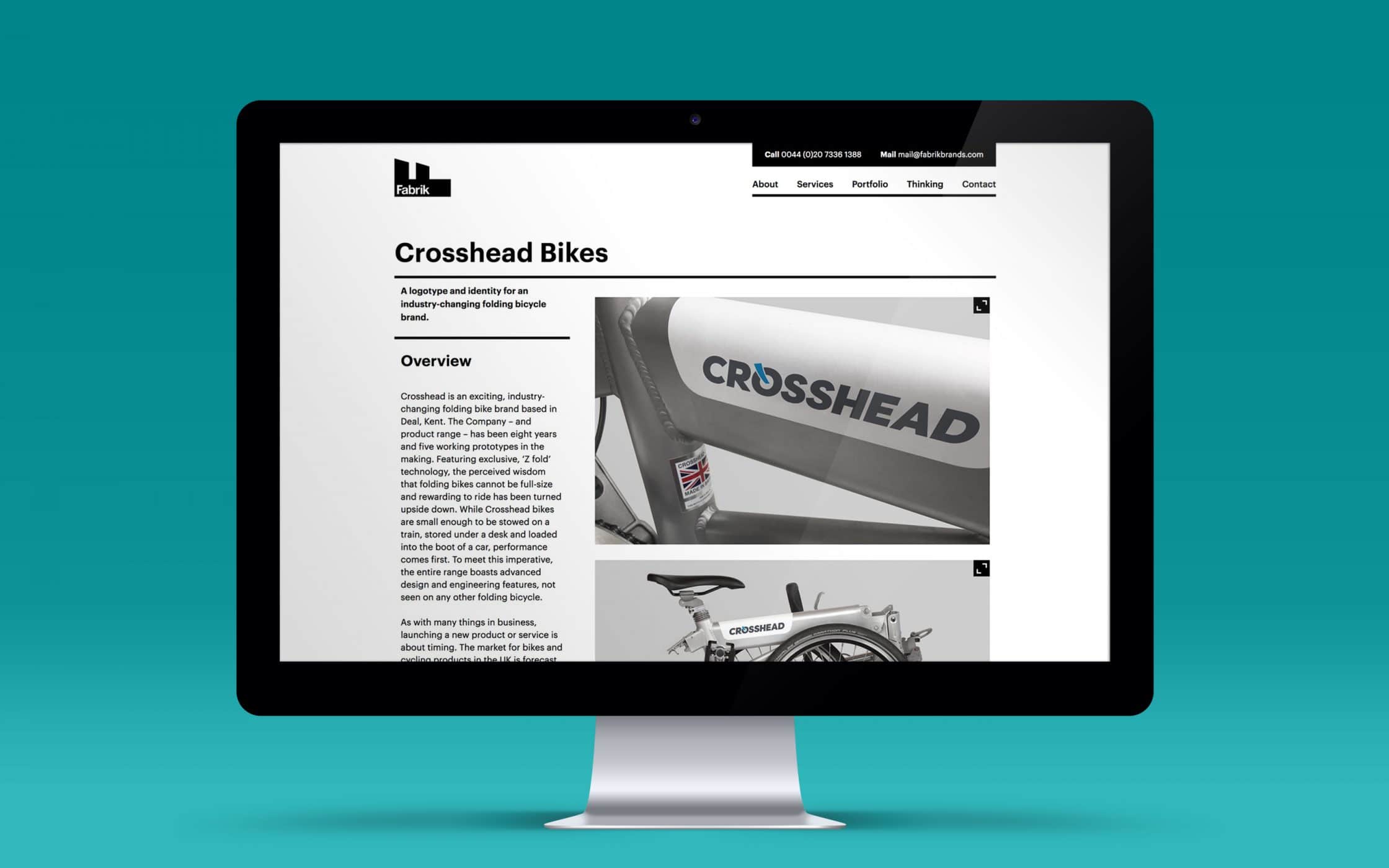You can’t handle the proof: How to use brand case studies as social proof

There’s an unbelievable amount of information on the internet today.
In fact, Statista.com found that in 2018, there were about 409 million blog accounts on Tumblr, and approximately 28.3 million people in the US updating a blog at least once a month. In other words, we’ve never had access to more information.
The question is, with so much data out there, how do we know what we can really trust? The answer: social proof.
Social proof isn’t a new idea, but the rise in digital connections has made it more important today than ever before. Around 81% of all consumers use the internet to research companies and products before making purchases, and we all feel better buying something when it’s supported by five-star reviews and testimonials.
While a quick review from a customer can be incredibly valuable, brand case studies can take the impact of social proof to the next level by adding another element of professionalism to your presentations.
A case study combines the glowing review of a previous customer or client, with the carefully structured branding of your company. That means that you get the emotional appeal of a genuinely happy customer, along with the professional impact of a well-designed document.
Here, we’ll look at how you can make the most of your case study brand strategy.

The power of business case studies: What is social proof?
Before you can fully understand and appreciate the potential of business case studies, you might need a quick lesson on “social proof.”
The concept of social proof is built on the idea that customers will naturally change their behaviour to fit with what other people are doing. It’s the “Monkey see; monkey do” approach to marketing. When you go to Starbucks and see people lining up behind the counter, you automatically join the back of the queue. When you see a celebrity drinking a new brand of smoothie, you feel like you want to try it too.
Social proof works because we’re naturally “social” creatures. We like to feel as though we’re a part of something bigger than ourselves. Additionally, because we’re all a little cynical of corporations these days, social proof gives you a way to tell your customers how great your products/services are, without saying it.
Let’s face it, while you can claim you offer the best muffins in the world; people aren’t going to believe you until other real-life people start echoing that sentiment.
While using any form of social proof on your website and content is valuable, there are many different types of social proof available, and some people still believe that case studies are the most valuable – particularly for B2B brands. Short quotes from happy customers can work wonders for your conversion rate, but case studies are in-depth and immersive explorations into what your business can really do. They connect with customers on a deeper level, while highlighting your values, and demonstrating your potential.
When you’re appealing to B2B customers, you’re attempting to earn the attention of someone who wants a lot of proof and logic to help guide their decisions. B2B brands are more driven by results than customers, who allow emotion to make their choices for them.
The case for case studies: Why use case studies in marketing?
On the surface, case studies are simply a way to show how your product or service benefits your customer. They’re just like in-depth testimonials, taken from someone with influence and authority. For instance, look at BaseCamp’s “customer’s page”. The company introduces its USP and what it can offer, before giving visitors a chance to explore unique stories in further depth. Each story addresses a particular pain point that a customer might experience, and how BaseCamp can help with that issue.

Brand case studies, like those in the example above, allow organisations to prove that they can really solve the issues and pain points their target audience suffer from. Business case studies generate confidence in the services or items you have to offer, as well as:
- Better brand reach: The language used throughout a case study (including a description of the problem your customer faced) naturally matches the kinds of phrases your users search for. Marketing case studies can, therefore, be an exceptional way to boost search engine optimisation, and access more organic traffic.
- Greater credibility: Case studies are packed full of detailed information – usually stretched across several pages. The statistics and insightful data provided in a case study can be crucial to building your brand authority and strengthening your reputation.
- New opportunities for content marketing: While we all know that content marketing is a crucial component in earning attention online, it can be difficult to find content that really resonates with your customer. Because case studies centre around real client problems and resolutions, they’re a highly relevant form of information. Additionally, you can publish case studies in a range of formats, from eBooks and articles to videos and podcasts.
- Reasons to reach out to the press/influencers: Case studies give you a valuable reason to reach out to other media outlets like press release websites and industry magazines. By sharing a valuable story, you can improve brand awareness, and even capture the attentions of influencers in your space.
In a world where customers simply don’t know who to trust, case studies can be astronomically useful to your brand strategy.
How to use brand case studies in your marketing
According to information gathered by the Content Marketing Institute, digital marketers in the UK use an average of 12 tactics to earn the attention of customers. Case studies are the fifth most popular form of content, after social media posts, emails, blogs, and articles. The CMI also notes that 63% of marketers feel case studies are crucial to their success.
While it’s easy to find evidence that brand case studies work, it can be far more difficult to decide how you should implement your case study strategy. Here are just some of the options you can consider.
1. Create a dedicated brand case studies page
If you want to make sure that your business case studies get the attention they deserve on your website, why not make them their own page? On the Fabrik website, we use our “Portfolio” section to offer new and existing clients the chance to browse through the work we’ve done for other companies and discover the kind of benefits they could achieve with us.

The term “Portfolio” works well for a creative agency, but you can use your case study page anything you like, from “Testimonials,” to “Our Work” or even “Success Stories.”
Make sure that your page is easy to navigate and use. For instance, you’ll notice that we’ve separated our studies into different sections based on the kind of work we’ve done, from “branding” and “naming” to “digital design.”
2. Use case studies on landing pages
Once you’ve finished writing up your case study, you’ll have a selection of results, statistics, and quotes you can access whenever you like. Including those quotes on product and landing pages can be very inspiring for new customers. When website visitors reach your landing pages, they’re usually already in the “consideration” stage of the buyer journey. This means that they’re actively researching the products you have to offer.
Case study quotes on a landing page can be that extra dose of credibility your customer needs to take the plunge. Remember, the quotes you use should be results-based and measurable. Percentages often have the best impact.
3. Create brand videos from case studies
As you know, content comes in many different shapes and sizes. There are podcasts, social media posts, blogs, and of course – the ever-popular video. For companies who want to get the most out of their case studies, a quick video outlining what you’ve done for a prior company can be a powerful part of your campaign. Some prospects will be more likely to watch a video than read a lengthy business case study.
Giving people the option to either check out the written piece, or watch it ensures that you have the best reach, and the ultimate search engine strategy too. What’s more, you can have a little fun with your case study videos too. Just look at the Slack video below as an example:
4. Write blogs about your case studies
Simply having advertising case studies on your website isn’t enough to earn the attention of your target audience. If you want your terrific testimonials to have an impact, then you need to promote them too. A good idea could be to write a blog about your case study, which helps to outline some of the biggest accomplishments you achieved, and the challenges you overcame for your client.

Remember, don’t focus the blog too much on your business. Your marketing case studies are a way of showing your customers what they can get from you. You could even implement a slide-in CTA that reminds people to click through to the full case study if they want to find out more. For an example of a great case study blog, check out the above piece from Moz.
5. Use case studies in your email marketing
Brand case studies can also be particularly well-suited to email marketing strategies. If you have a list of contacts segmented according to their industry, you can send people from the right niche case studies that are specifically suited to their interests and pain points.
On the other hand, you could use your case studies to nurture leads and remind them of how valuable your product or service could be when they don’t make a purchase for a while. As an incredibly detailed form of social proof, case studies can be perfect for re-engaging leads who might have dropped off your sales list for a while. All you need to do to get the best results is to make sure that the emails you send are personalised to suit the recipient.

Case study template: What you need for social proof
A case study strategy gives you a consistent form of high-quality social proof that you can use to strengthen your website, improve your authority, and build your brand identity.
The whole point of case studies is that they allow you to develop greater trust with your target audience when they’re not sure whether they should buy from you or not. In simple terms, they give your customers third-party evidence that you’re as great as you claim to be.
So, how do you start writing your brand case studies? We’ve put together a quick case study template to help you out:
Case study template step 1: Find the right case study candidates
At their core, marketing case studies are all about storytelling. The key thing to remember here is that not all stories are as compelling as each other. If you want your narrative to resonate with your audience, then you need to pick a tale that’s going to be engaging and compelling. Look for a company to write about that:
- Understands your product/service: A customer who understands your brand and USP will have an easier time articulating the value of what you offer into quotes you can use in your marketing materials.
- Achieved remarkable results: Clients that saw the best outcomes from working with you are clearly going to deliver the best business case studies. Look for someone who achieved a great ROI or overcome a significant problem.
- Have industry impact: Case studies are generally a B2B solution for the standard customer testimonial. If you’re a B2B company, discussing a case study that focuses on a well-known brand can help to draw more attention to your business. Remember, a case study from a company with brand recognition leads to 24.4 times greater growth than one from an unknown enterprise.

Case study template step 2: Make a connection
Once you’ve decided who and what you want to write your business case studies about, you’ll need to reach out to participants. Make sure that you outline the purpose of the case study straight away and make contributing to the testimonial as easy as possible for your customer. Ideally, you should be the one gathering all the numbers and data. All you need from your client is their permission to publish the results, and a few quotes if possible.
To simplify the process of getting endorsements, put together a case study release form. The nature of this document might vary according to what you plan to do with the study and the nature of your work, but it should generally include:
- An explanation of why you’re creating the case study and what you’re going to do with it.
- A statement about the information you’re going to include in the case study. You might look at things like logos, names, job titles, and even images of the group you were working with.
- An explanation of what you’d like the participant to do. Maybe you want some feedback from different members of the team or a couple of useful quotes. Could they share details about the results of their campaign that you haven’t been able to gather yourself?
Case study template step 3: Get personal
Great brand case studies generally include a lot of quantitative data. This means that you might have a handful of statistics, pie charts, graphs and other numbers to show your audience. However, the best business case studies are always the ones that include a personal touch. You can make your case studies more powerful by finding ways to match them to the audience members who frequently visit your website.
Remember, people react to familiarity, so search for case study examples that fit with the buyer personas you want to appeal to most. When you’re reaching out to your participants, ask them questions that will allow you to tell a more emotional story. For instance:
- What challenges did you face before that we were able to help you with?
- Had you tried to solve your problems before, and what happened then?
- What were your goals when you started working with us?
- How did you benefit from working with us in the long-term and short-term?
Case study template step 4: Structure your brand case studies
Once you’ve finished your interviews, you should have plenty of great information you can use to build your advertising case studies. The more information you have, the better, but it can be overwhelming to see all that data laid out in front of you. With that in mind, we recommend following this case study template when structuring your information:
- Start with a title: Create a short, simple title that highlights the biggest benefit your customer achieved. For instance; “[Brand] Achieves 104% ROI Improvement thanks to [Product]”.
- Add a summary: Use a few sentences, to sum up the entire story. This lets your reader or listener know what they’re going to see in your case study.
- Use the “About” section: Introduce the company you served. You can pull information from a business website or social media page here.
- Introduce the “Challenges”: Describe the challenges your customer faced before they used your service or product. This section can also include the goals that your client hoped to accomplish when they came to you.
- Explain what you did: Add a section describing what you did to assist with the customer’s problems using your service or product.
- Highlight the results: Show off the results of the project, along with statistics, graphs, and testimonials are taken from the company themselves. Make sure you have plenty of numbers here to make your case study seem more credible.
- Supporting quotes: Use a few powerful quotes throughout each section to add more emotional power to the piece.

How to make your marketing case studies stand out
Now you have a basic case study template outlining everything you need for sensational social proof.
However, there are a few more things you can do to make your brand case study particularly compelling. Remember, this is your chance to take brand storytelling to the next level, with narratives that are carefully structured to resonate with your target audience, and give them the information they need to generate trust and loyalty.
When constructing your case studies, remember to think about:
1. Using the right medium
The most obvious medium for a case study is a text document. After all, case studies can be a great way to improve your search engine ranking, as they give you an easy way to add keywords and phrases into your website. Additionally, well-structured text presentations can look incredibly professional, helping to add more authority to your site. However, just because text works, doesn’t mean it’s your only option.
Feel free to get creative with your case study strategy. Use brand photography to show off the people behind the team you were working with. Add video to the mix and make some graphs to really ensure that your data pops off the page. Just remember not to get so carried away that your audience can’t see the woods for the trees.
2. Making it easy to read
Case studies are an inherently professional form of social proof. For many companies, it’s tempting to try and appear more reliable by packing your case studies full of long fancy words and technical jargon. However, it’s important to remember that your readers won’t always have a lot of time to work out what you’re trying to say. They’d much rather have something they can read and understand quickly.
Make sure your case study contains all the most valuable details of the interaction – from problem, to resolution. However, keep the format clear and simple. Use easy-to-understand words and keep sentences short. Think about using bullet points to get information across fast, and separate sections with sub-headings. Even the use of plenty of white space can make a powerful difference.
3. Promoting your case studies
When it comes to creating an effective case study brand strategy, your work doesn’t stop after you’ve published something. An amazing piece of content isn’t much good if no-one can find and consume it. This means that you need to create a promotion strategy for your case studies. Post links to them on your social media channels with great quotes to whet your audience’s appetite. Talk about your studies in your sales pitches or add them to your email signature.
No matter what you do, make sure that you don’t forget about your studies either. Revisit everything you publish later on to keep your content fresh. For instance, try following up with your candidate six months after the original study took place so you can update the content with more news about what the business is doing now. This not only demonstrates that you hold good relationships with your customers, but it also gives you a new chance to turn that company back into a client.

Are you ready to create compelling case studies?
Case studies are the ultimate form of B2B marketing testimonials.
These simple demonstrations of your work showcase data-driven stories about your brand, your product/service, and what you can do for other people. As a form of social proof, they give credibility to your company, and show that you’re not simply “all talk.”
While there are many forms of social proof out there, case studies will always be the most compelling in a B2B market, because they give the businesses the data they need to make decisions they can claim as “logical.” Additionally, case studies also give depth to your company by showing your value beyond your product and service. They indicate what it’s like to work with you, and what kind of values you bring to your relationships with clients.
The power of the case study grows more significant every day. According to DemandGen, in 2017, 78% of buyers used case studies to research their purchases. Case studies are accessible, digestible, and an effective way to make people believe in your brand.
If you enjoyed this article, you might enjoy these too:
— Promotional practices to perfect your online presence
— How the changing privacy policies affect your brand











